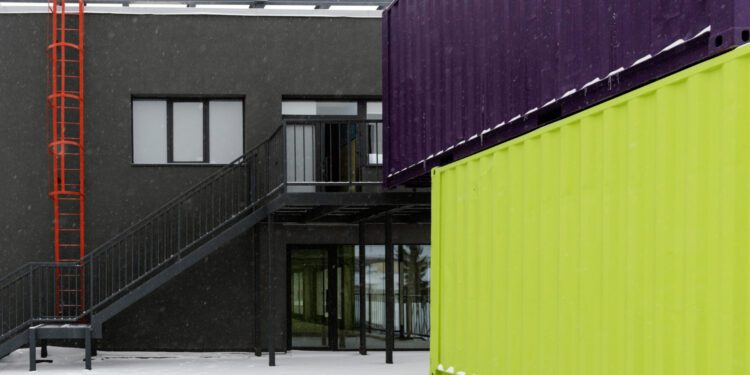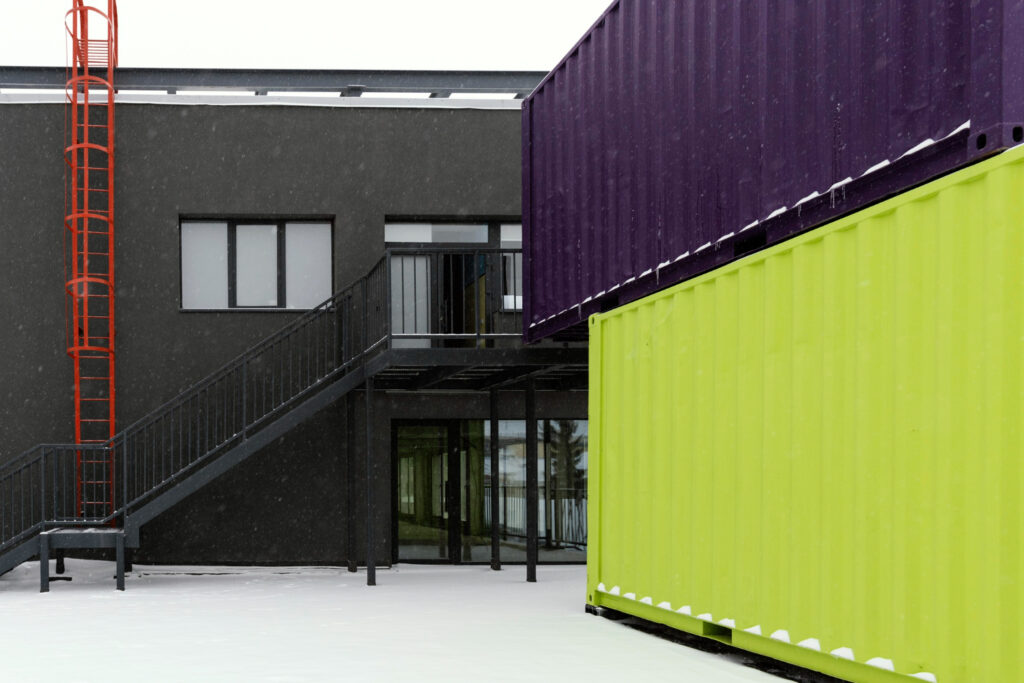Shipping Container Offices: Weighing the Pros and Cons


Table of Contents
Key Takeaways
- Shipping container offices are cost-effective, eco-friendly, portable, and durable.
- These office spaces can face insulation issues, space constraints, and regulatory hurdles.
- The adaptability and flexibility of container offices offer numerous customization options that can match business-specific needs.
Table of Contents
- Introduction to Shipping Container Offices
- Advantages of Container Offices
- Potential Drawbacks to Consider
- Design Flexibility and Customization
- Real-Life Examples of Success
- Cost Analysis and Budget Considerations
- Final Thoughts
Shipping container offices offer affordability, sustainability, and flexibility, making them ideal for creative and modular workspaces. They are eco-friendly and quick to construct but may face challenges like insulation needs, limited space, and zoning restrictions. Careful planning ensures these innovative structures balance benefits with potential drawbacks for optimal functionality.
Introduction to Shipping Container Offices
In the rapidly evolving landscape of workplace structures, shipping container offices have emerged as a fascinating and innovative solution. Built from recycled shipping containers, these workplaces provide a distinctive fusion of contemporary style, practicality, and sustainability. Known as shipping container office spaces, they promise a dynamic alternative to traditional brick-and-mortar buildings.
Fuelled by the rise of environmental consciousness and the demand for sustainable architecture, these novel office environments attract many businesses. Container offices efficiently repurpose old shipping containers, transforming them into livable spaces while reducing environmental waste. Their design potential and eco-friendly nature make them appealing to forward-thinking companies.
Advantages of Container Offices
Cost-Effective
One of the most appealing aspects of using shipping containers as office spaces is their cost-effectiveness. Traditional construction can be quite expensive, requiring detailed planning, sourcing of various materials, and extensive labor. In contrast, converting a shipping container into an office is often more straightforward and less costly. This money-saving feature is especially advantageous for new and small businesses with tight budgets as it allows them to distribute resources more efficiently to different areas of their operations.
Eco-Friendly
As sustainability becomes increasingly important, many companies seek greener building options. Shipping container offices fit this need ideally, as they utilize recycled materials that would otherwise contribute to environmental waste. By opting for a container office, companies can significantly reduce their carbon footprint, promoting more sustainable practices in daily operations. The architectural process is streamlined, and using pre-existing materials minimizes the impact of construction on the environment. According to Architecture & Design, such practices support a lower emission approach to building.
Portable and Flexible
Another significant advantage of container offices is their portability. Business dynamics often require location changes, and shipping container offices are designed for flexibility. They can be easily transported, allowing companies to respond quickly to market or operational needs changes without enduring the time-consuming and costly process of new construction. This ability to quickly relocate an office space adds a layer of versatility not commonly found in traditional office buildings.
Durability
Originally designed to endure harsh oceanic conditions, shipping containers are incredibly durable and robust. Their steel construction makes them resistant to weather extremes, impacts, and even seismic activities, providing a secure option for office spaces. This durability ensures that the investment in a container office is long-term and capable of withstanding many challenges that would typically compromise other types of structures.
Potential Drawbacks to Consider
Insulation Challenges
Despite their many benefits, shipping container offices also have specific challenges. One of the primary issues is ensuring proper insulation. A shipping container’s metal structure can make it susceptible to temperature fluctuations, potentially leading to discomfort for occupants. Adequate insulation solutions must be implemented to create a temperature-controlled environment essential for energy efficiency and occupant comfort.
Space Constraints
Another consideration is the inherent space limitations. Standard shipping containers come in fixed sizes, which may not suit every business’s spatial requirements. Creative and strategic interior design is necessary to maximize the available space efficiently. Companies may consider incorporating additional containers or multi-level layouts to meet operational needs.
Regulatory Hurdles
Businesses must also navigate various regulatory challenges when implementing container offices. Zoning regulations and building codes differ significantly depending on the area, and noncompliance can result in legal issues. Careful planning and obtaining the necessary permits are crucial before opening a container office.
Design Flexibility and Customization
A distinct advantage of container offices is the opportunity for custom design. Their modular nature allows businesses to tailor the design and functionality to suit particular operational needs. Because of this versatility, businesses may design an office space that embodies their brand identity and boosts worker productivity. From fundamental interior changes to more complex architectural arrangements, the possibilities are vast, limited only by imagination and purpose.
Real-Life Examples of Success
Numerous companies worldwide have successfully integrated shipping container offices into their operations. For instance, BBC News has reported on businesses that have utilized these structures to create low-cost and eye-catching office spaces. Other companies considering this creative approach to office design can find inspiration in these successful implementations.
Cost Analysis and Budget Considerations
A detailed cost analysis is critical when transitioning to a shipping container office. This assessment should consider the initial investment and the long-term financial gains—such as lower maintenance costs, energy savings, and possible property value increases. By thoroughly understanding these measures, businesses may maximize their operational capabilities and make strategic decisions that support their financial objectives.
Final Thoughts
In conclusion, shipping container offices offer a unique alternative to conventional office spaces. While they present tangible benefits such as cost savings, environmental sustainability, portability, and resilience, considering potential drawbacks is essential. Businesses must conduct thorough evaluations and planning to ensure these innovative structures meet operational requirements. With strategic implementation, container offices can become a powerful element of modern business infrastructure, embodying a balance of form and function in today’s rapidly changing world.

